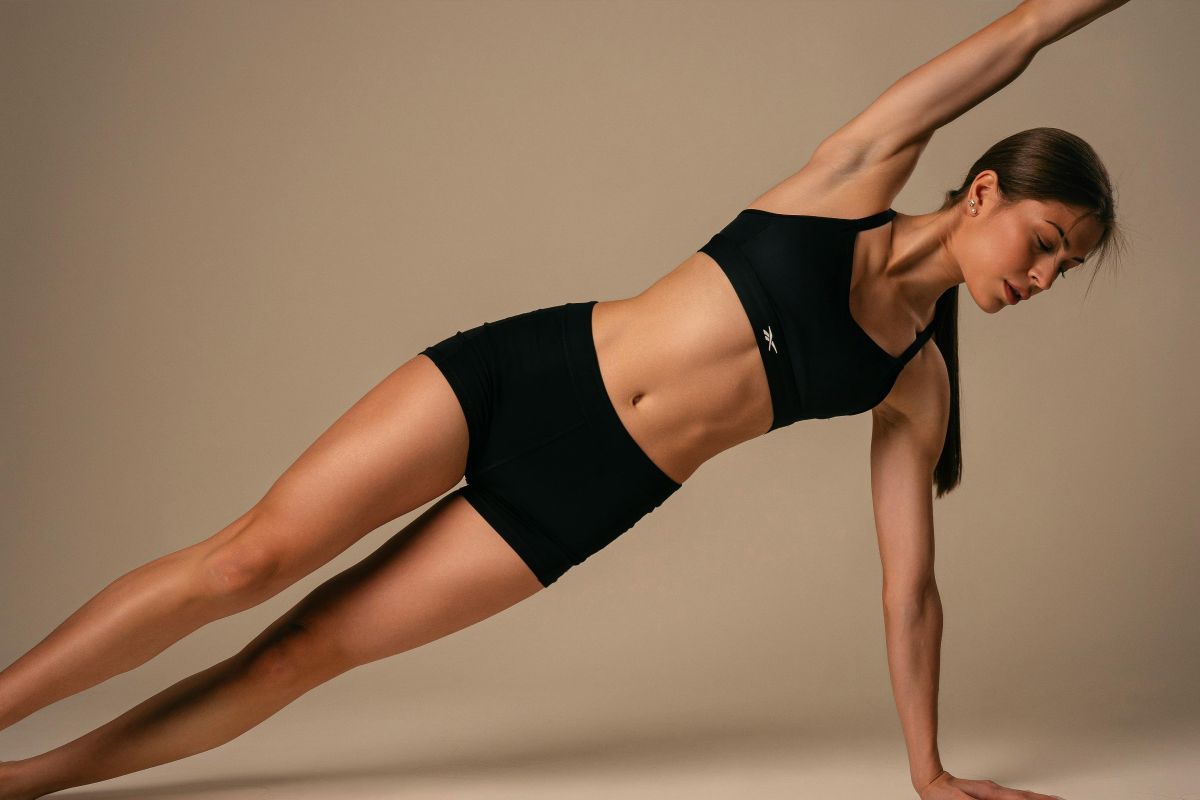TL;DR
Somatic yoga is a gentle and mindful movement practice designed to reconnect you with your body, ease stress, and release stored tension. It doesn’t require any previous yoga experience, flexibility, or special equipment. This beginner’s guide provides step-by-step instructions, helpful tips, and FAQs to help you confidently start your somatic yoga journey.
What Is Somatic Yoga?
Somatic yoga blends slow, conscious movement with breath and internal awareness. The word somatic comes from the Greek word soma, meaning “living body.” Unlike many yoga styles that focus on performing specific poses or increasing flexibility, somatic yoga focuses on how your body feels from within, not how it looks from the outside.
Rather than stretching or pushing into deep postures, somatic yoga helps release chronic tension, retrain muscle patterns, and calm the nervous system. This makes it especially welcoming for beginners who are looking for a gentler way to move and relax.
Why Somatic Yoga Is Ideal for Beginners
Somatic yoga is one of the most beginner-friendly forms of yoga. Here’s why:
1. No Flexibility Required
Movements are simple, slow, and mindful. You can practice within your own range of motion without needing to touch your toes or twist your body into complex shapes.
2. Suitable for All Body Types and Fitness Levels
You don’t need to be athletic or experienced with yoga to begin. The main goal is to move with awareness and stay present with your body—not to perform.
3. Gently Releases Stress and Tension
The slow pace and grounded movements help to release physical tension and support nervous system regulation. This can leave you feeling physically lighter and mentally clearer after just one session.
4. Encourages Self-Awareness
Somatic yoga is not about copying what you see—it’s about exploring your own experience. This makes it easier to build confidence, connect with your body, and improve your overall wellbeing over time.
A Beginner’s Somatic Yoga Practice: Step-by-Step
You don’t need to memorize a long routine or hold complex poses. The following simple sequence offers an easy entry point into the practice.
1. Grounding Breath
- Sit or lie down in a comfortable position.
- Close your eyes or soften your gaze.
- Inhale slowly through your nose for a count of four.
- Exhale gently through your mouth for a count of four.
- Continue breathing this way for 5–10 cycles.
Why it helps: This calms tension and helps focus your attention inward.
2. Gentle Neck Rolls
- Begin by dropping your chin slowly toward your chest.
- Roll your head gently toward your right shoulder, then back and over to the left shoulder.
- Move slowly. Keep the motion soft and pain-free.
- Repeat for 3–5 slow circles, then reverse direction.
Why it helps: Encourages release in the neck and upper back—areas where stress often collects.
3. Shoulder Lift and Release
- Inhale and slowly lift both shoulders up toward your ears.
- Hold briefly, noticing what you feel.
- Exhale, allowing the shoulders to drop naturally.
- Repeat this 5–7 times, then pause to rest and notice any changes.
Why it helps: Releases stored tension and brings awareness to unconscious holding patterns in the shoulders.
4. Seated Cat-Cow Movement
- Sit tall on a chair or the floor.
- Place hands on your knees or thighs.
- Inhale: Gently arch your back, open your chest, and lift your chin slightly.
- Exhale: Round the spine, pulling the belly in and letting the head drop forward.
- Repeat for 6–10 slow breaths.
Why it helps: Mobilizes the spine and invites breath into more areas of the body.
5. Supine Pelvic Rocking
- Lie on your back with knees bent and feet hip-width apart. Arms rest beside you.
- On an inhale, tilt your pelvis slightly forward, increasing the space under your lower back.
- On an exhale, tilt your pelvis backward—flattening your lower back to the floor.
- Repeat 10–15 times, slowly and with awareness.
Why it helps: Encourages freedom in the hips and lower spine; very grounding.
6. Rest and Observation (Body Scan)
- Lie on your back with legs extended and arms at your sides or on your belly.
- Close your eyes and take several deep breaths.
- Mentally scan your body from feet to head. Notice any areas of change, ease, or lingering tension.
- Stay here for 2–5 minutes.
Why it helps: Integration is an essential part of somatic practice. It helps the nervous system process change.
Tips for Success on Your Somatic Yoga Journey
Embarking on a new movement path can feel unfamiliar at first. These tips will help you feel more at ease in your practice.
1. Start Small and Stay Consistent
- Begin with 10–15 minutes a day, even just a few times a week.
- It’s okay to repeat the same few movements—repetition builds awareness and results.
2. Focus on Sensation, Not Looks
- You don’t need mirrors.
- Ask yourself: “What do I feel?” instead of “Am I doing it right?”
3. Use Support Props
- Blankets, cushions, and bolsters are helpful for added comfort and support.
- Elevate hips or support knees where needed. Your body should feel supported, not strained.
4. Take Breaks Without Guilt
- Rest between exercises and notice sensations during those pauses.
- Rest is not separate from the practice—it’s part of it.
5. Practice in a Quiet Space
- A calm physical space helps support a calm internal space.
- Turn off distractions, dim the lights, and let the body guide the experience.
Sample Weekly Beginner Routine
Here’s an easy-to-follow weekly structure you can adapt to your lifestyle:
| Day | Focus Area | Suggested Duration |
|---|---|---|
| Monday | Grounding breath + neck rolls | 10 min |
| Tuesday | Seated cat-cow | 12 min |
| Wednesday | Shoulder release + rest | 10–15 min |
| Thursday | Supine pelvic rocking | 15 min |
| Friday | Full beginner sequence | 20–25 min |
| Saturday | Body scan + breathwork | 10 min |
| Sunday | Optional rest / free movement | – |
FAQs: Beginning Somatic Yoga
Do I need to be flexible to practice somatic yoga?
Not at all. This practice meets you where you are—whether you’re stiff, sore, or new to movement.
Is it normal to not feel much at first?
Yes. Body awareness deepens over time. Stay consistent and curious.
Can I do this daily?
Absolutely. Short and gentle daily sessions are beneficial and reinforce learning.
What should I wear?
Comfortable clothes that allow you to move freely. No need for yoga-specific gear.
Do I need a yoga mat?
A soft surface or mat is helpful, but not a requirement to begin.
How Somatic Yoga Supports Long-Term Wellbeing
Even from your very first practice, somatic yoga can offer meaningful shifts in how your body feels and moves. Over time, benefits may include:
- Reduced muscle tightness in commonly tense areas such as the neck, back, and hips.
- Improved breathing patterns, leading to more energy and calm.
- More restful sleep as your nervous system learns to relax more deeply.
- Increased resilience in daily life, helping you manage challenges more gracefully.
- Better alignment and range of motion, all without forcing or pushing.
Somatic yoga helps you build a new form of strength—not the kind that pushes or performs, but one that listens, adapts, and supports.
Final Thoughts
Starting somatic yoga isn’t about becoming a master of movement—it’s about discovering how to move and feel better in your own body. With no pressure, no expectation, and no performance required, this is a practice that welcomes everyone.
You don’t need to be experienced, flexible, or strong. You simply need to show up, breathe, move gently, and pay attention. Over time, your body will respond with relief, clarity, and a quiet kind of strength grounded in awareness.




